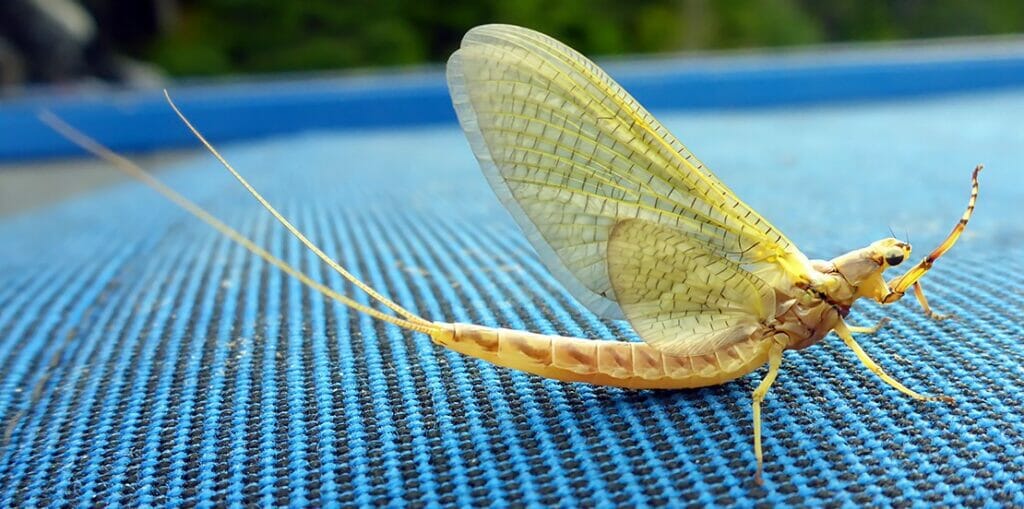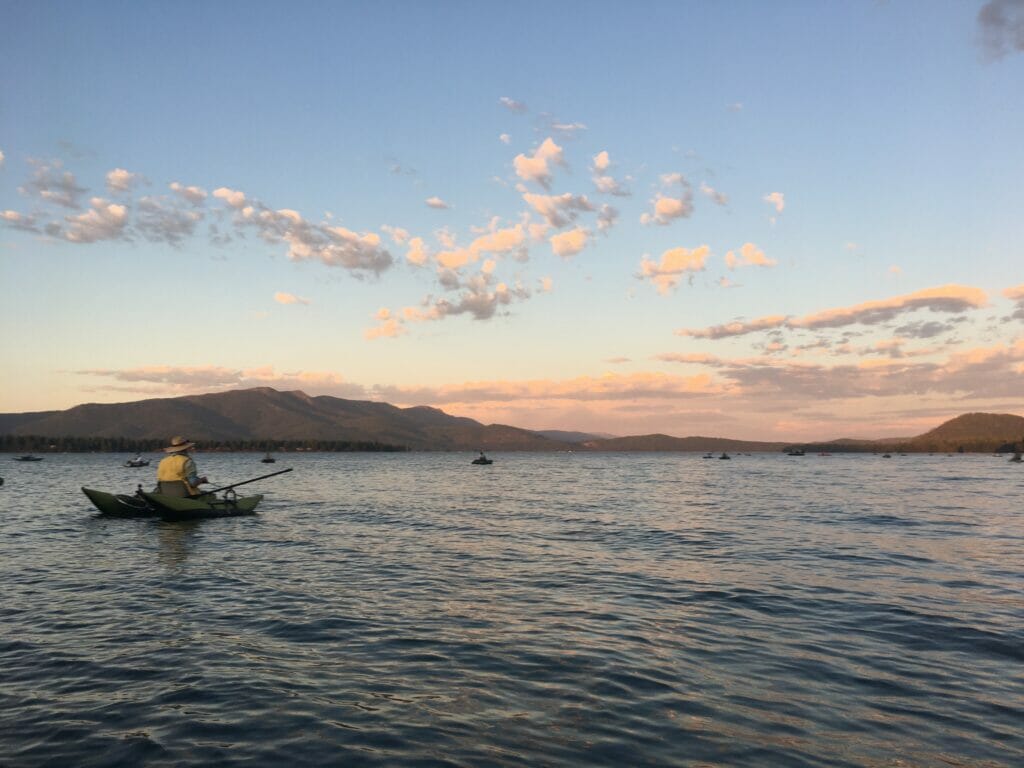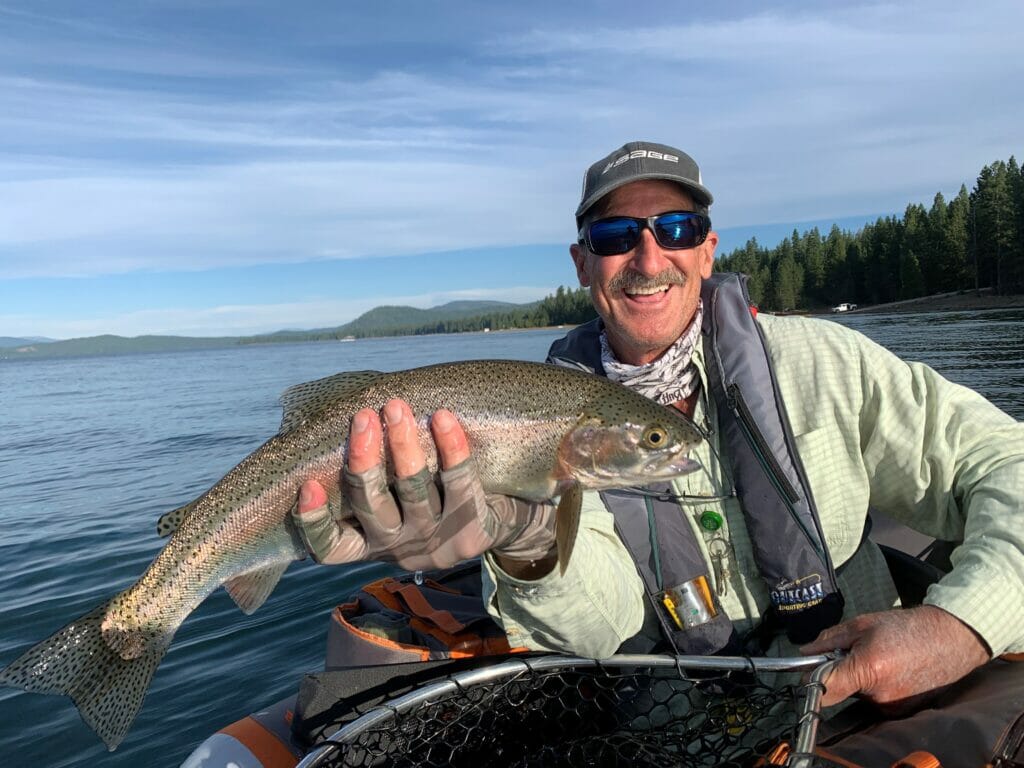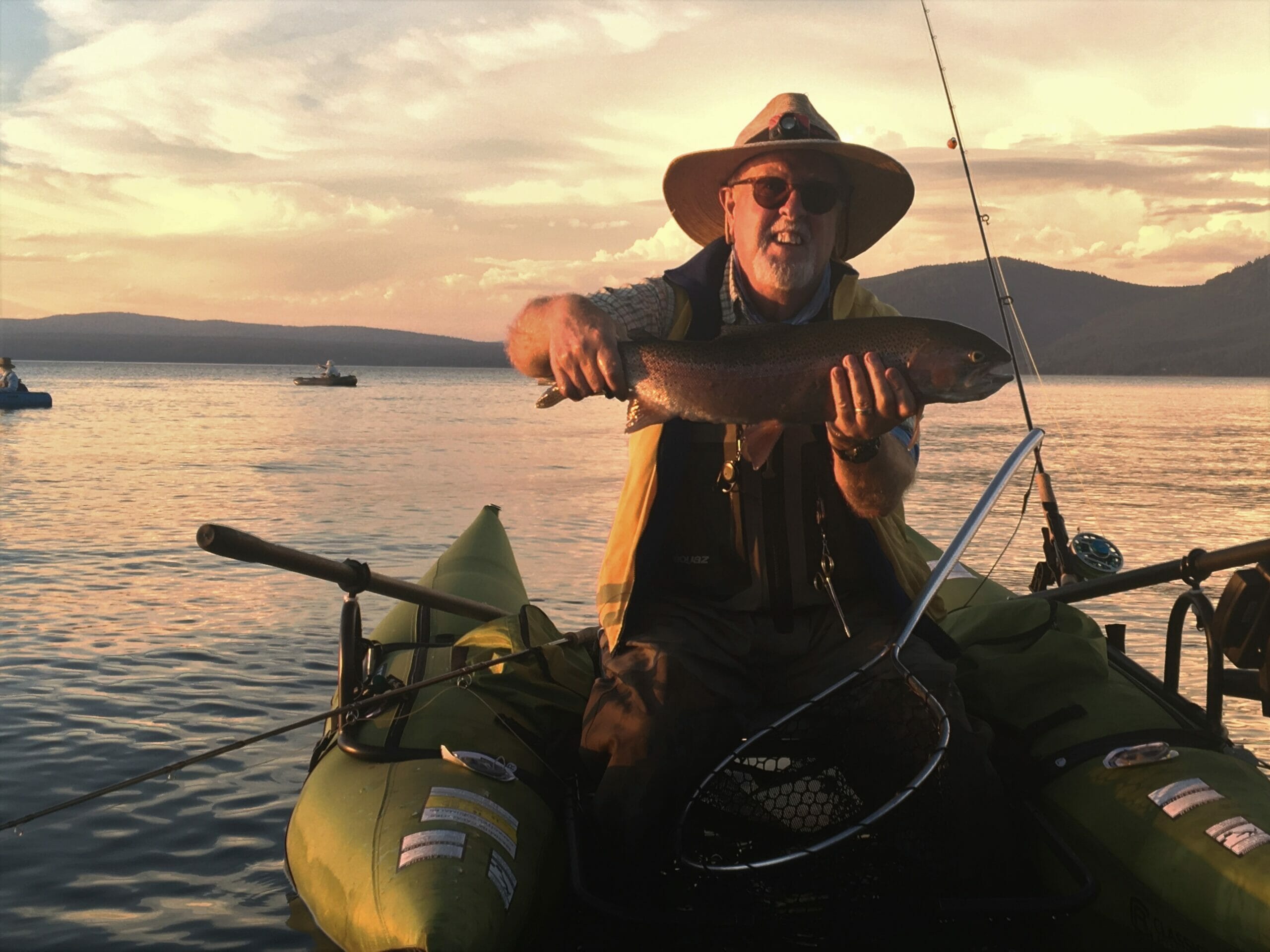Over the weekend I spent a total of 12 hours fishing. I landed two fish to show for it.
It was nonetheless supremely satisfying. And no, I wasn’t fishing for steelhead.
About 100 miles north of Lake Tahoe a lovely reservoir lies resplendent, framed by ponderosa pines, Douglas fir and the southern terminus of the Cascades. Lake Almanor impounds the North Fork of the Feather River and various feeder streams. It’s a water-based recreation Mecca for refugees from the oppressive summer heat in the Sacramento Valley.
And it’s full of huge rainbow and brown trout.
At some point in the early summer season, typically mid-June, Lake Almanor begins to flaunt a short but remarkable phenomenon: the hatch of hexagenia limbata, the largest mayfly in North America. The daily exercise begins in the early evening and peaks for about 15 minutes of intense activity as the last light drains from the sky.

It’s hard to describe how marvelous it is to bear witness to this extravagance of nature. Anglers come from miles around to pay homage. And for the first time, this year I was one of them.
Hexagenia mayfly habitat includes lakes and slow-moving rivers with silted or muddy bottoms in which the nymphs can burrow. The adults can be so prolific that their hatches are visible on radar and cause public safety issues.
Their effects on trout, however, are more salubrious.
I am always skeptical of fishing tales that seem too good to be true. And I had heard many of them over the years about fishing the hex hatch at Lake Almanor. Giant brown and rainbow trout porpoising for bugs as big as your thumb and indiscriminately hammering anything remotely resembling a hex nymph or dun. Dozens of trout caught by any capable angler, none under 20 inches.
Yeah, right.
But at last I got my act together to join the former president of TU’s Steinbeck Country Chapter and long-time leader of the Santa Cruz Fly Fishermen, Tim Loomis, to see if the tales had even a smidgen of veracity.
Over three nights, we got on the water about 5 p.m., and fished until it was too dark to see much. I coordinated my visit perfectly with a heat wave. At 4,500 feet in elevation, at a time of day when the temperature should have been comfortable, it was still so warm that I went without waders and donned a shirt made for midday fishing in the tropics.

Tim assured me that hexes like warm weather. They sure took their sweet time in demonstrating it.
Once we were on the water, kicking idly in our float tubes, I looked eagerly for the insects that come off in such swarms they cause traffic accidents and drive big trout crazy. And for about three and a half hours, they obliged me by appearing with such infrequency and in such immodest numbers that I was wholly underwhelmed.
The individuals who did appear, however, were impressive. They shrugged out of their drab nymphal selves at the surface and briefly floated there like tiny dragons, wings bright yellow and their inverse-arched tails twitching for a few moments until they were able to lift off the water.
They were beautiful. But they were hardly prolific. And no hog trout came to the surface to eat them.
Then, just before 9 p.m., as if responding to some secret cue, the hatch turned on. And the trout began to feast.

Their table manners were atrocious. They ate like Vikings.
It was an extraordinary display of fecundity. For me, it was difficult to do more than simply watch in awe, as the surface of the lake became carpeted with miniature sailboats—and three- to five-pound trout, with some seemingly larger, began slashing at them.
For fly anglers, the most common strategy here is to use a slow-sink line with a hex nymph pattern, which is very slowly trolled or stripped. That’s how I caught the two 18- to 20-inch rainbows I landed. But by the final evening, I forewent that tactic in favor of one endorsed by Riley, another SCFF dude: “the Hail Mary.” This involved casting two big dry flies on a relatively short leader as dusk took over the sky.
“Their table manners were atrocious. They ate like Vikings.”
And despite missing numerous takes, I never felt more gratification from “waving a stick,” to poach the John Gierach phrase. It was incredible to be in the midst of that short-lived chaos, twisting and spinning in my float tube to cast at rising fish, consuming the experience with as much gluttony as the trout fed on the hex adults before they could lift off. Shadowy anglers around me hooted and I joined them in vocalizing our applause.
What most remains, now, is a deep appreciation for the intricate, inscrutable mechanics of nature, and the opportunities they provide for us to connect with ageless instincts and mysteries. If you go to Lake Almanor to fish the hex hatch, be sure to bring a 6-wt rod and 10-lb. tippet. And prepare to do as much slack-jawed spectating as fishing.

TU’s Feather River Chapter has been working for many years throughout the Feather River watershed to conserve, protect and restore habitat, flows and wild trout populations. FRTU is currently engaged with the Sierra Institute for Community and Environment and other partners in an ambitious, watershed-wide initiative to map whirling disease and complete a whole-basin fish assessment, with a goal of better protecting important salmon spawning streams and wild trout fisheries.



